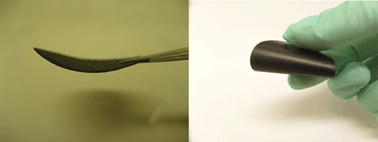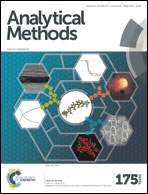Fabrication and adsorption characterization of single-walled carbon nanotube (SWNT) buckypaper (BP) for use in air samplers
Abstract
Single-walled carbon nanotubes (SWNTs) have been investigated as a promising sorbent for volatile organic compound (VOC) sampling. We also successfully demonstrated that pre-analysis desorption can be achieved by irradiating the sorbent with high intensity visible light pulses. This technique, photothermal desorption (PTD), can improve sensitivity and shorten current analytical procedure. Different fabrication methods of a buckypaper (BP), a self-supporting form of carbon nanotubes (CNTs), were explored; three methods using arc discharge (AD) SWNTs included non-cleaned, acetone-cleaned, and methanol-cleaned and one method using high-pressure carbon monoxide (HiPco) SWNTs. Adsorption efficiencies of the fabricated BPs were compared in terms of Brunauer, Emmett, and Teller (BET) surface area, pore size, and toluene adsorption capacity. All materials were found to have high BET surface area (211 to 649 m2 g−1) and toluene adsorption capacity (25 to 106 mg g−1) but HiPco BP exhibited the highest BET surface area (649 ± 3 m2 g−1) with the smallest mean pore size (7.7 ± 0.3 nm) and the greatest toluene adsorption capacity (106 mg g−1). Additionally, HiPco BP had the simplest fabrication process which taken as a whole is a clear indication that further investigations using the PTD technique should be explored with this material.


 Please wait while we load your content...
Please wait while we load your content...